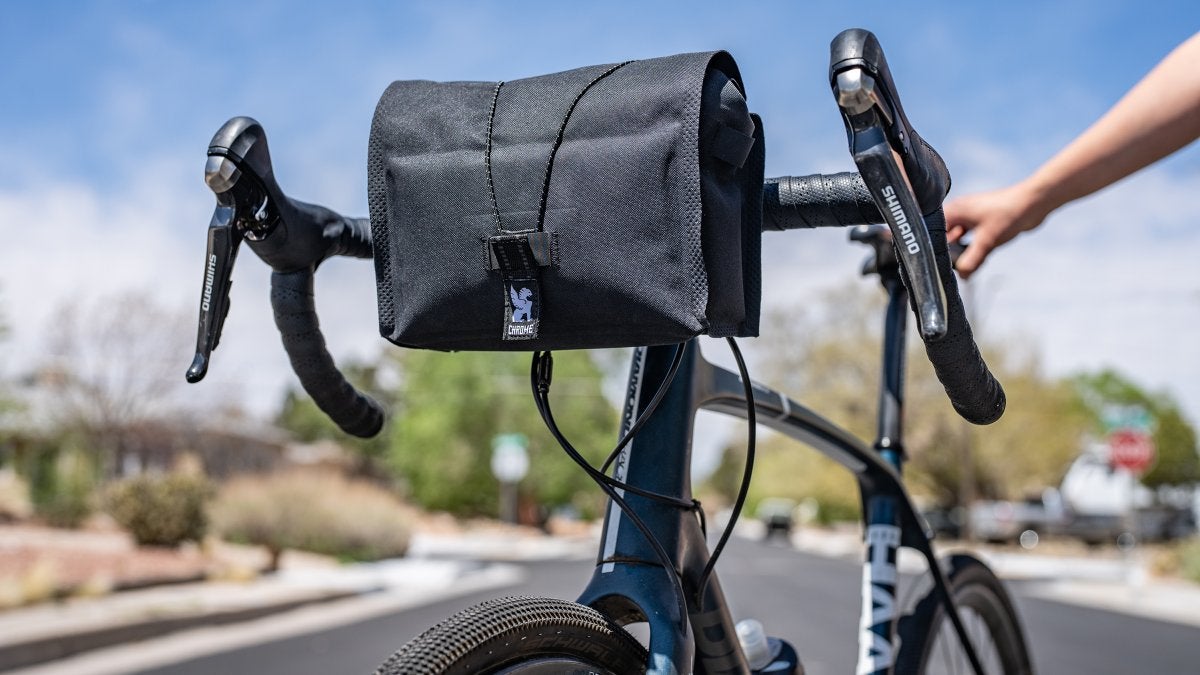No products in the cart.
Outdoor Adventure
A Handlebar Bag Is the Most Underrated Bike Upgrade
In the past year, more people than ever jumped on bikes. According to our reporting, fitness bike sales were up 125 percent after the pandemic first hit. Gravel bike sales were up 144 percent in June 2020 compared to 2019, and electric-assist bike sales were up 190 percent, year over year, in June 2020. Many analysts predict this trend will continue through 2021.
For those of you who bought a new bike or jumped on an old one, welcome—or welcome back—to the team. I’ve relied on bicycles for stress relief for more than two decades and found cycling to be my saving grace during the most isolating parts of lockdown. Now that the weather’s getting warmer, I find every excuse I can to get out, be it on my commuter bike for simple errands or my gravel grinder for long, dusty weekend rides.
I’ve spent lots of time testing bike accessories to see what sticks. I always roll with a helmet and water and never leave home without lights—front and back—because they can help reduce accidents no matter what time of day. The one other piece of gear that now makes it onto nearly every bike I own is a simple handlebar bag.
After thousands of miles, I’ve found that these pouches are an easy and accessible way to haul around my most important repair tools and everyday carry gear. Instead of carrying a clunky backpack or shoving my repair kit, wallet, keys, and phone into my pocket every time I run an errand, a handlebar bag carries all those items.
Most of these bags easily attach to your handlebars via Velcro or plastic straps, are designed to stay put, and don’t interfere with cables or lights. I don’t have to worry about my phone falling out of my pocket, and I won’t forget my tool kit, because it’s always in the bag and on the bike.
My current favorite is the Chrome Urban Ex 2.0 ($70). It’s just one cavernous pouch—there aren’t any additional pockets—but it sits atop my list because its rolltop is easy to get into and close, even while riding. The Ex 2.0 also comes with a hideaway strap that turns it into a shoulder bag off the bike. That portability is important for me because I live in a city with lots of petty theft, so I don’t leave anything on my bike when it’s locked up and I’m inside for an extended period of time.
On long gravel rides, I used to shove all my snacks and repair tools into my jersey pockets. That worked fine, but it feels better to have that weight off my back and on the front of the bike instead. The Ex 2.0, which carries three to five liters thanks to the expandable rolltop, is big enough to carry my usual items, plus an extra layer, a packable windbreaker, and even a small camera.
There are instances where handlebar bags aren’t practical. If I’m riding 100 miles on a road bike, aerodynamics and weight are more important than convenience. Most mountain bikers might favor on-body storage options, like backpacks or fanny packs, because handlebar bags tend to bang around on rough terrain. But for other styles of riding, handlebar bags are hard to beat.
In addition to the Ex 2.0, here are three other options that I’ve tested and recommend.
Farewell Barrel Bag ($88)

These bags are made by hand just down the street from the Outside offices in Santa Fe. The Barrel is about two liters smaller than the Ex 2.0 but still carries my essentials, no problem. It’s built with a 1,000-denier Cordura nylon that’s bomber and light and uses indestructible mini Voile straps as handlebar attachments.
Ornot Handlebar Bag ($90)

One main pocket on this bag swallows your ride tools and snacks, while your phone slides into its own pouch on the outside and is held in place with a small elastic cord. This feature creates easy access when you’re riding and want to pull out your phone for a photo.
Swift Industries Ardea Pack ($135)

Tuck away the robust hipbelt while this bag is on your bike, and flip it out if you want to take it for a hike. Swift also makes a number of attachments, like this stem bag, that fit onto the Ardea to carry things like a water bottle, camera, or phone.
Lead Photo: Jakob Schiller
Source link

